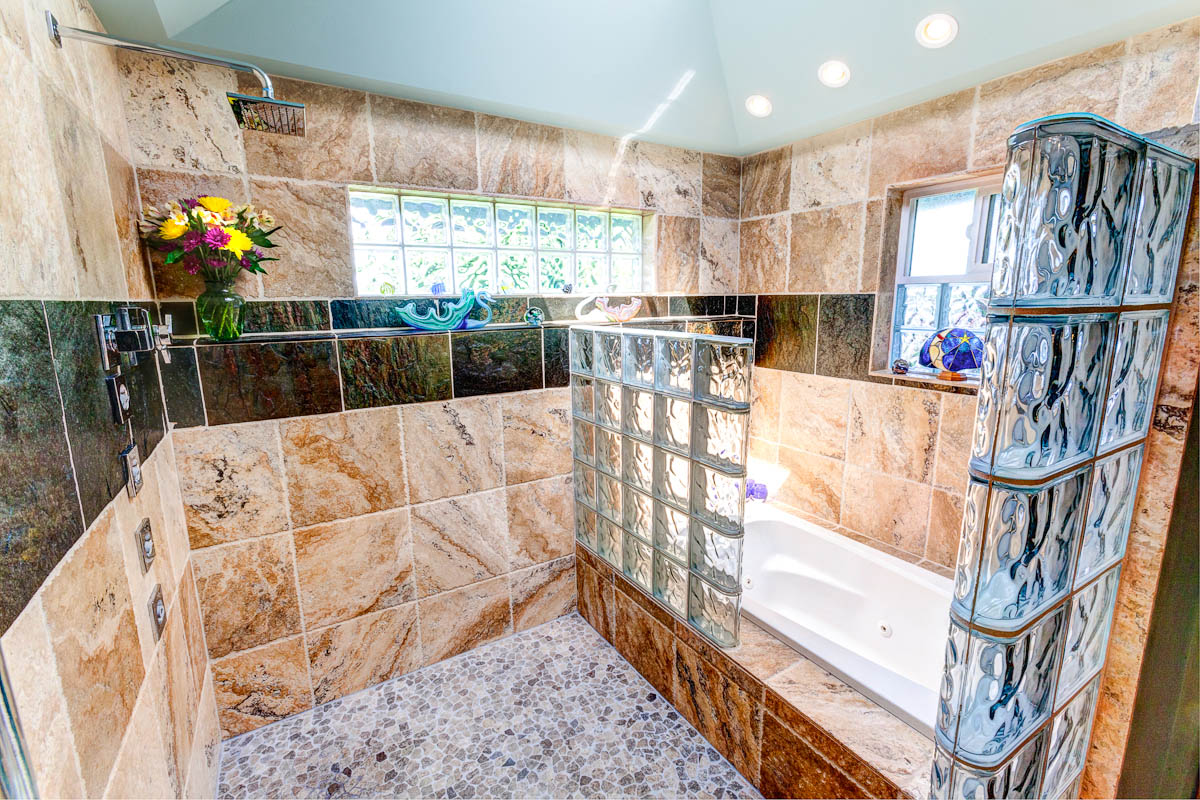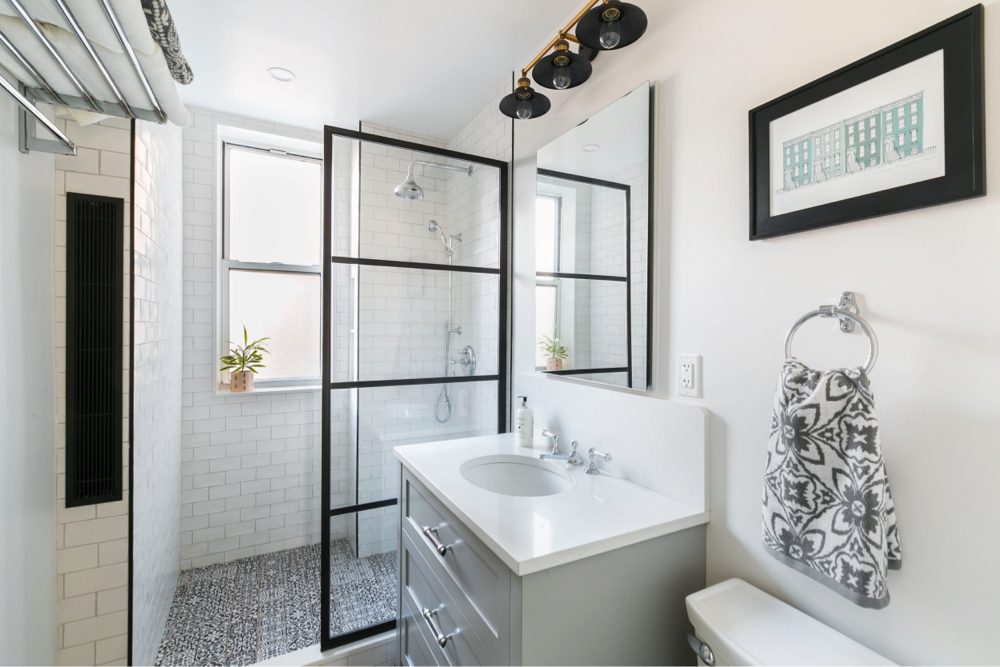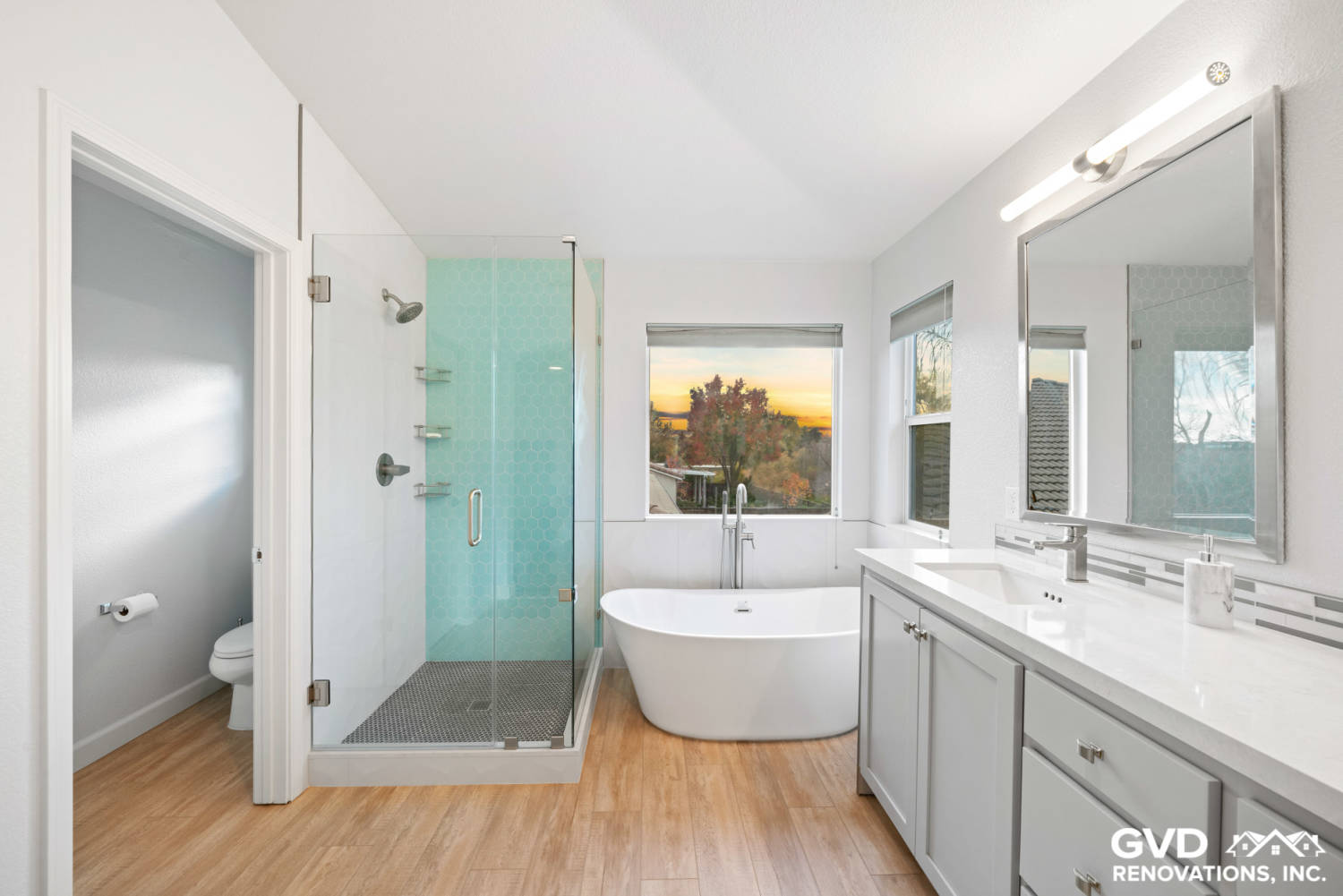The average cost of a bathroom remodel ranges from $6,000 to $15,000. Factors like size, materials, and labor influence the final price.
Remodeling a bathroom can transform your home’s appeal and functionality. Homeowners often seek upgrades for aesthetics, energy efficiency, or increased property value. A bathroom remodel adds comfort and can improve daily routines. With various styles and materials available, the choices can feel overwhelming.
Whether opting for a simple refresh or a complete overhaul, understanding costs upfront is crucial. This guide will help you navigate the expenses associated with a bathroom remodel, ensuring you make informed decisions. Explore the average costs, factors affecting pricing, and tips for budgeting effectively in your renovation journey.
Breaking Down The Average Bathroom Remodel Cost
Understanding the average cost of a bathroom remodel helps homeowners plan effectively. Costs can vary widely based on many factors. Knowing these factors aids in making informed decisions.
Factors Influencing Total Expenses
- Size of the Bathroom: Larger bathrooms require more materials and labor.
- Quality of Materials: High-end materials increase overall costs.
- Labor Costs: Hiring experienced professionals may raise expenses.
- Location: Urban areas usually have higher labor and material costs.
- Design Complexity: Custom designs can significantly increase expenses.
Price Range For Standard To Luxury Upgrades
| Upgrade Type | Price Range |
|---|---|
| Standard Remodel | $5,000 – $15,000 |
| Mid-Range Remodel | $15,000 – $30,000 |
| Luxury Remodel | $30,000 – $60,000+ |
Standard remodels focus on basic upgrades. These may include new fixtures and finishes. Mid-range options offer better materials and designs. Luxury remodels provide high-end finishes and custom features. Choose the upgrade type that fits your budget.

Credit: www.dreammaker-remodel.com
Initial Considerations Before Remodeling
Before starting a bathroom remodel, consider essential factors. Proper planning saves time and money. Focus on your needs and budget. This section covers key aspects to think about.
Assessing Your Bathroom’s Needs
Evaluate your bathroom’s current condition. Identify what needs improvement. Here are some questions to ask:
- Is the layout functional?
- Do you need more storage?
- Are there plumbing issues?
- Is the lighting sufficient?
Make a list of priorities. Focus on features that enhance functionality. Consider style and design preferences. A clear plan helps streamline the remodeling process.
Setting Realistic Financial Expectations
Budgeting is crucial for a successful remodel. Understand average costs before starting. Here’s a simple breakdown of expenses:
| Item | Average Cost |
|---|---|
| Labor | $1,500 – $3,000 |
| Materials | $1,000 – $5,000 |
| Fixtures | $500 – $2,000 |
| Permits | $200 – $1,000 |
Account for unexpected costs. Set aside an extra 10-20% of your budget. This cushion provides flexibility during the remodel. Stick to your financial plan to avoid stress.
Strategic Planning For A Budget-friendly Remodel
Planning a bathroom remodel can be exciting. With the right strategy, you can stay within your budget. Focus on essential tasks. This helps to create a beautiful space without overspending.
Prioritizing Projects For Maximum Impact
Identify the key areas that need attention. Prioritize projects that offer the best return on investment. Here are some high-impact areas to consider:
- Updating Fixtures: New faucets and showerheads can refresh your bathroom.
- Painting: A fresh coat of paint changes the entire look.
- Lighting: Improved lighting enhances functionality and ambiance.
- Flooring: Upgrading to modern tiles can elevate the space.
Focus on one or two projects at a time. This approach saves money and reduces stress.
Creating A Flexible Budget Plan
Building a budget is crucial for any remodel. A flexible budget allows for unexpected costs. Follow these steps to create your budget:
- Research Costs: Investigate average prices for materials and labor.
- Set a Maximum Limit: Decide on a total budget before starting.
- Allocate Funds: Divide your budget into categories, like fixtures or labor.
- Include a Contingency: Set aside 10-20% for unexpected expenses.
Review your budget regularly. Adjust as needed to stay on track.
| Item | Estimated Cost |
|---|---|
| New Fixtures | $200 – $600 |
| Paint | $30 – $100 |
| Lighting | $50 – $300 |
| Flooring | $500 – $2,000 |
Keep track of your spending. This helps to avoid surprises. A well-planned budget leads to a successful remodel.

Credit: www.corvus-construction.com
Cost-saving Tips For Material Selection
Bathroom remodeling can be expensive. Smart choices in materials can save money. Use these tips to find affordable options without sacrificing quality.
Choosing Affordable Alternatives
Many materials have cheaper alternatives that look great. Consider these options:
- Vinyl Flooring: Cost-effective and easy to install.
- Laminate Countertops: Affordable and available in many styles.
- Painted Cabinets: Refresh old cabinets with a new coat of paint.
- Fiberglass Showers: Durable and less expensive than tile.
Research these alternatives. They can dramatically lower your costs. Always check quality before purchasing.
Where To Find Deals And Discounts
Finding discounts can significantly reduce expenses. Look in these places:
- Home Improvement Stores: Check clearance sections for materials.
- Online Marketplaces: Sites like eBay or Craigslist often have good deals.
- Local Salvage Yards: Find unique and affordable materials.
- Seasonal Sales: Shop during holidays for discounts on supplies.
Sign up for newsletters from local stores. Get alerts on upcoming sales. This helps you stay informed about the best deals.
| Material | Average Cost | Affordable Alternative | Alternative Cost |
|---|---|---|---|
| Tile Flooring | $5 – $15 per sq. ft. | Vinyl Flooring | $1 – $3 per sq. ft. |
| Granite Countertops | $50 – $100 per sq. ft. | Laminate Countertops | $20 – $40 per sq. ft. |
| Custom Cabinets | $300 – $500 each | Painted Cabinets | $100 – $200 each |
Use this information to budget wisely. Choose smart alternatives and shop smartly.
Labor Costs And Working With Contractors
Understanding labor costs is crucial for a successful bathroom remodel. Hiring professionals can ensure quality work. However, it’s important to know what to expect in terms of fees.
Understanding Labor Fees
Labor fees vary based on several factors:
- Location: Urban areas often have higher rates.
- Experience: Skilled contractors charge more.
- Complexity: Complicated jobs require more labor.
Here’s a simple breakdown of average labor costs:
| Type of Work | Average Cost per Hour |
|---|---|
| Plumbing | $45 – $200 |
| Electrical | $50 – $150 |
| General Contractor | $50 – $150 |
Labor costs can take up a large part of your budget. Always ask for estimates before starting.
Negotiating With Professionals
Negotiating with contractors can save money. Keep these tips in mind:
- Get multiple estimates.
- Discuss your budget openly.
- Ask about discounts or promotions.
- Be clear about your expectations.
Building a good relationship with your contractor helps. Trust and communication lead to better results.
Always read contracts carefully. Look for hidden fees. Understand the payment schedule before you start.

Credit: sweeten.com
The Diy Approach To Bathroom Remodeling
Remodeling your bathroom can be exciting and rewarding. A DIY approach saves money and allows personal touches. Many tasks are simple enough for homeowners. Others may require professional help. Understanding both options is crucial for a successful remodel.
Tasks You Can Do Yourself
Here are some tasks that are perfect for DIY:
- Painting: Fresh paint can transform a space.
- Changing Fixtures: Swap out faucets and light fixtures easily.
- Installing Shelves: Add storage with simple shelving units.
- Upgrading Accessories: Replace towel bars and toilet paper holders.
- Minor Tiling: Consider DIY for small areas or backsplashes.
These tasks require minimal tools and skills. They can enhance aesthetics without breaking the bank.
When To Call In The Experts
Some projects are better left to professionals. Here are key signs to seek help:
- Electrical Work: Hire an electrician for wiring and circuit issues.
- Plumbing: Complex plumbing jobs need a licensed plumber.
- Structural Changes: Any wall removals require expert advice.
- Extensive Tiling: Large tile jobs demand experience and precision.
- Permits: Some projects need permits; professionals handle this.
Knowing when to DIY and when to hire helps avoid costly mistakes.
Hidden Costs And Avoiding Unpleasant Surprises
Bathroom remodels often come with unexpected expenses. Homeowners can face hidden costs that significantly increase the overall budget. Understanding these costs helps avoid surprises.
Preparing For The Unexpected
Before starting a remodel, prepare for potential surprises. Common hidden costs include:
- Structural repairs
- Electrical upgrades
- Plumbing issues
- Permit fees
- Unexpected design changes
Inspect your bathroom thoroughly. Look for signs of water damage, mold, or outdated plumbing. These issues can lead to higher costs later.
Contingency Budgeting
Set aside a contingency budget. This budget covers unforeseen expenses. A good rule is to allocate 10% to 20% of your total budget.
| Total Budget | 10% Contingency | 20% Contingency |
|---|---|---|
| $10,000 | $1,000 | $2,000 |
| $15,000 | $1,500 | $3,000 |
| $20,000 | $2,000 | $4,000 |
Review your budget often. Track all spending closely. This approach helps you stay within budget while preparing for the unexpected.
Long-term Savings: Energy-efficient Upgrades
Investing in energy-efficient upgrades during a bathroom remodel offers significant long-term savings. These upgrades reduce utility bills and contribute to a healthier environment. Homeowners can enjoy both comfort and cost-effectiveness by making smart choices.
Eco-friendly Choices
Choosing eco-friendly fixtures and materials can lower energy consumption. Here are some options:
- Low-Flow Toilets: Use less water per flush.
- Water-Efficient Showerheads: Reduce water usage without sacrificing pressure.
- LED Lighting: Consumes less energy and lasts longer than traditional bulbs.
- Recycled Materials: Minimize waste and reduce your carbon footprint.
These choices not only save money but also promote sustainability. Small changes lead to big impacts on the environment.
Return On Investment
Energy-efficient upgrades enhance your home’s value. A bathroom remodel can yield high returns. Consider these potential savings:
| Upgrade | Average Cost | Estimated Savings |
|---|---|---|
| Low-Flow Toilet | $300 | $100/year |
| Water-Efficient Showerhead | $50 | $70/year |
| LED Lighting | $100 | $50/year |
| Recycled Materials | $200 | Varies |
These upgrades often pay for themselves over time. Homeowners can enjoy lower utility bills and increased home value.
Conclusion: Maximizing Value Without Compromising Quality
Bathroom remodeling can boost your home’s value significantly. Smart planning helps achieve quality results within budget. Focus on essential upgrades to maximize both aesthetic appeal and functionality.
Balancing Cost And Aesthetics
Finding the right balance between cost and appearance is crucial. Here are some effective strategies:
- Choose Quality Materials: Invest in durable materials. They last longer and look better.
- Prioritize Essential Upgrades: Focus on fixtures like faucets and lighting.
- Consider DIY Options: Handle simple tasks yourself to save money.
- Plan the Layout Wisely: Keep plumbing in place to reduce costs.
Consider this table for a quick overview of costs:
| Item | Average Cost |
|---|---|
| Vanity | $500 – $2,000 |
| Shower/Tub | $1,000 – $3,000 |
| Flooring | $800 – $2,500 |
| Lighting | $100 – $500 |
Final Checklist For Smart Budgeting
Use this checklist to ensure you stay within budget:
- Set a clear budget before starting.
- Research average costs for your area.
- Get multiple quotes from contractors.
- Include a contingency fund of 10-15%.
- Track all expenses during the remodel.
Staying organized helps in maximizing your bathroom remodel value. By following these tips, you can enhance your space without overspending.
Frequently Asked Questions
How Much Should You Spend On A Bathroom Remodel?
A bathroom remodel typically costs between $5,000 and $15,000. Factors affecting the budget include size, materials, and labor. For high-end renovations, expenses can exceed $25,000. Set a budget based on your needs and preferences for the best results.
What Is The Most Expensive Part Of A Bathroom Remodel?
The most expensive part of a bathroom remodel is typically the fixtures. High-quality bathtubs, sinks, and faucets significantly increase costs. Labor and tile work also add to the overall expense. Investing in durable materials can enhance longevity and aesthetics, making them worthwhile in the long run.
What Is The Average Cost Of A Bathroom Remodel In Indiana?
The average cost of a bathroom remodel in Indiana ranges from $10,000 to $25,000. Factors influencing the price include size, materials, and labor costs. Budgeting carefully ensures you achieve your desired outcome without overspending. Always obtain multiple quotes to find the best value for your project.
What Is The Average Cost Of A Bathroom Remodel In Phoenix, Az?
The average cost of a bathroom remodel in Phoenix, AZ, ranges from $10,000 to $25,000. Factors like size, materials, and labor influence the final price. Homeowners should budget accordingly for quality renovations that enhance functionality and aesthetics. Always get multiple quotes for the best value.
Conclusion
Remodeling a bathroom can greatly enhance your home’s value and comfort. Understanding the average costs helps you budget effectively. Always consider quality materials and professional help for the best results. A well-planned remodel not only meets your needs but also creates a space you’ll love for years to come.
